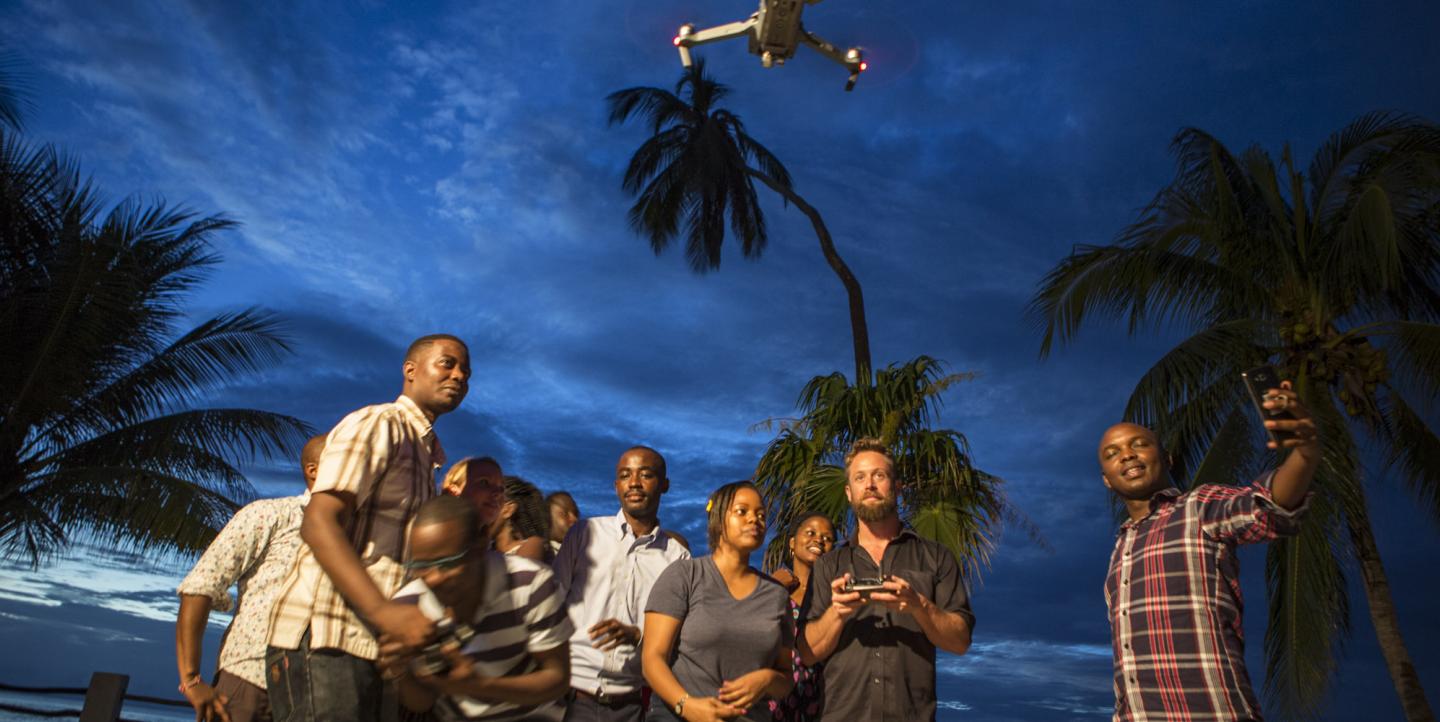More news outlets are recognizing that drones are a relatively inexpensive way to capture aerial photography and videography, especially compared to previous methods (namely, helicopters).
How can journalists learn to use drone technology to tell compelling stories? That’s what Code for Africa aimed to do in its latest workshop on drone journalism in Zanzibar, Tanzania.
The one-day workshop covered how to use drones for breaking news stories, collecting data, and covering difficult-to-reach places. Seven journalists from Tanzania, Kenya and Uganda attended, and will be working on developing their own drone journalism projects over the next two months.
For example, Nuzulack Dausen of Tanzania’s Mwananchi Group will be using drones to report on illegal river agriculture and sand mining in Dar es Salaam, while other journalists will focus on urbanization, agriculture and climate change issues.
As they work on their stories, the journalists will receive support and mentoring from drone journalist Johnny Miller and drone pilot Chris Onyando of MicroDrone Africa. The two have previously worked together to cover inequality in Nairobi’s neighborhoods for the Unequal Scenes project.
Ending a great day at the #dronecamp with, what else, a drone lift-off #africandrone pic.twitter.com/jpgKrsth2G
— Unequal Scenes (@UnequalScenes) May 17, 2017
Miller, a Code for Africa fellow, told participants that drone technology was not a “magic bullet” but allowed news media to give audiences “a new perspective on what is sometimes an old story.”
Attendee Maxwell Agwanda, a photojournalist with the Standard Media Group in Kenya, called drones a “game changer” for African journalism. “Images that were once impossible to get due to difficult terrain or the danger involved will no longer be out of reach,” he said. “I'm eager to put what I've learnt here into practice."
What should aspiring drone journalists do to ensure their stories come together? Here’s what the mentors at the Code for Africa drone camp advised:
- Plan ahead. Drone journalism is a system with lots of moving parts that require a variety of skills. The drone operator or pilot may not have the skill to capture the images required to generate good journalism content. It is important to plan your shots early and tell your drone pilot the exact scenes that you want.
- Get a good fixer. A good fixer is critical to the process and can help with site analysis, route mapping and identifying good vantage points. This will help you save time as drones are only capable of staying in the air for a limited time at each go.
- Invest in drone capabilities beyond aerial imagery. Drones are able to accommodate different sensors such as chemical, sound and light sensors that can enable you to gather more data for your stories.
- Take photos on the ground to supplement the drone images. Drones cannot provide the kind of intimate view that you can get through up-close photography.
The drone camp was timed to coincide with the ZANSEA conference in Tanzania, which focused on the use of drones in research, disaster risk reduction and mapping applications.
See more of IJNet’s coverage of drone journalism here.
(View the photo slideshow below in fullscreen mode and click "see info" to read the accompanying captions).
Irene Wangui is an Africa program consultant at the International Center for Journalists.

